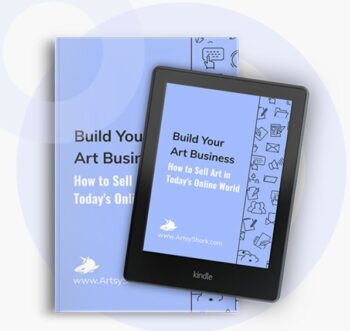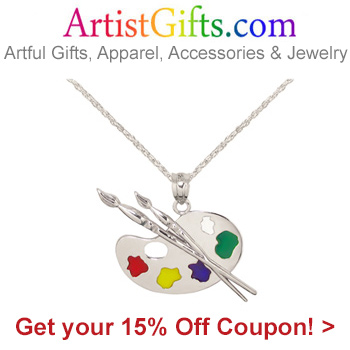by Carolyn Edlund
Most people don’t want your art. That doesn’t matter.

Learn about your audience to more effectively market and sell your art.
The truth is that the vast majority of people in the world don’t purchase art from artists at all. If they want to put something on their wall, they might go with family photographs. Or they may hang a poster or a commercially produced import purchased at a discount store, but they are not art shoppers or collectors.
Fortunately, you don’t have to worry about this vast majority of people. They don’t want to buy your art and have little or no interest in what you are doing. That’s perfectly fine. It actually makes things much easier for you as an art seller, because you can eliminate all of these people from your marketing efforts. They are non-customers.
You can’t please everyone, and there is no point in trying. Instead, when you begin to plan your art marketing, you will focus on a much smaller, specific group of selected people. There are people out there who are interested in your work. Some will fall in love, buy your art and become your newest collector. The task is to identify who these people are, and to understand why they like your art and how to reach them. Rather than using a scattershot approach to try to interest everyone, you will only look to appeal to certain chosen people. When you do this, you are cultivating a target audience.
How do you do this?
First, consider your intention.
Are you creating work for a particular type of person? That would be your niche. Say your body of work is centered about tropical paintings featuring tournament fish. It’s pretty obvious that you could name affluent boat owners and tournament fishermen in tropical areas as potential customers. Or perhaps you design silver jewelry made with mature women in mind; that is another niche market, and you have deliberately selected it.
Even if you don’t have a specific demographic in mind when you are creating, picture the eventual owner in your mind. Who do you believe would be most interested in what you make? (You might be wrong, but at least you have a starting point.)
Next step, evaluate your response.
Who is following you on social media? Take a look at the profiles of your followers, or people who like and comment on artwork you have posted. See what you can learn about them to determine why they are interested, such as their age, location, occupation or other characteristics. What do your fans have in common with one another? That knowledge can help you begin to build out a profile of your ideal target customer.
If you exhibit your work at an art fair or exhibition, take note of who is looking at it. How would you describe them? Why are they excited about your art? Who is pulling out their credit card? Engage with people as they view your artwork, and you will be able to learn important information. Having conversations with shoppers and potential collectors is one of the most valuable things you can do for your art business. You will often gain surprising insight about why your work appeals to particular people—or not. This too will help you with that customer profile.
Then, consider your price points.
Does your artwork sell for several thousand dollars and up for an original? Or do your prices hover in the hundreds of dollars, or less? Are you selling smaller works or reproductions in order to spread your offering and capture the eyes of different demographics with different needs and pocketbooks? In that case, you are definitely cultivating more than one ideal customer. When you know who would buy art at different price tiers from you, you gain control over what you create, how you market, and how you speak with potential clients.
Once you have a good grasp of who you are approaching and communicating with as a prospect, you can move forward. You can make decisions that reflect your knowledge of how to reach them. You will have a good idea of where they live, their lifestyle and preferences, and what matters most to them. In fact, you can get really granular on who you are looking for as the perfect collector. See this article on how one artist did diligent research and ended up changing her approach, working smart and selling more.
Connect through messaging.
When you have adequate information about your target customer, you can create marketing messages that tap into what they care about and value. The content of your marketing should reflect what your target customer believes and what they consider important. Authentic and consistent messages that reach out to prospects in a friendly and conversational way are the foundation for building relationships. Then you can place yourself and your work squarely into consideration for a purchase.
Where will this messaging appear? Everywhere that you have a presence, both on and offline. Create content geared specifically toward your target customer and place it on your website, on signage, in your booth display, on social posts, in talks that you give, and in the conversations you have with people.
Identifying and connecting with the best prospects for your art business is one of the most valuable things you can do as an entrepreneur. This approach works in many industries, not just for artists. It’s a practical business strategy, and it’s effective.
So, don’t worry about the vast numbers of people who have no interest in your art and will never purchase. You don’t need them. It’s possible to earn a living by identifying and tapping into a pool of your best potential customers who will love what you make and want to become your collectors.


Speak Your Mind